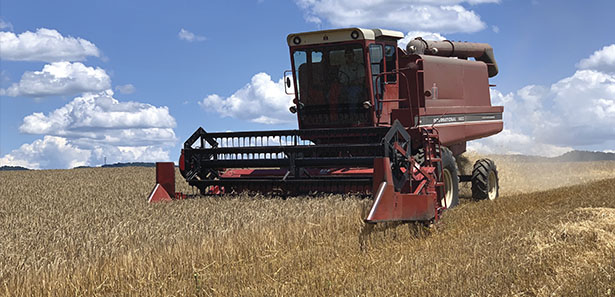by Scott Robertson
When Will Payne headlined the event introducing InvestSWVA 16 months ago in Abingdon, he talked about creating, “big idea projects.” One of those big idea projects is coming into its own. In economic development terms, it’s known as “Operation Calypso.” In real world language, it’s Appalachian Grains, an attempt to make southwest Virginia a player in the craft beverage supply chain for all of Virginia and the surrounding states.
Payne and Will Clear of the Virginia Department of Mines, Minerals and Energy, Payne’s frequent collaborator on energy-based economic development efforts, have spent months lining up partners ranging from the Virginia Agricultural Extension to Virginia Tech to the Lenowisco Planning District to Mountain Empire Community College. Their goal has been to incentivize southwest Virginia farmers to add superior quality barley to their crop mix.
“We want to give farmers an opportunity to make more money with a specialty grain that can bring them 30 to 40 percent more than what they would receive with feed quality when they sell their grain,” Payne told the Business Journal in an early January Zoom call with several Appalachian Grains Partners. “Many farmers are not growing anything in the winter, so this gives them an opportunity to grow something, or to co-crop with soybeans, for example.”
It’s not a far-fetched idea. In fact, says Amy Byington, Lee County Agriculture Extension agent, “we have been growing small grains in this region for a long time.” That means, among other things, there’s already a good deal of older equipment in the region, ready to use in the production of barley. So, when the first Appalachian Grains farmers raised and sold their malt quality barley in 2020, they got almost $300 per acre more than if they had raised corn on the same land. Had they raised only feed quality grain, they would only have made $80 more per acre, says Byington.

In addition, says Wade Thomason of Virginia Tech, if the farmers choose to do so, they can sell the straw for additional profit. Virginia Tech is almost unique among American universities in that it never abandoned its small grains program. So, southwest Virginia is home to the largest barley breeding program east of the Mississippi River.
That was the good news. The bad news is that malt quality grain needs to be cleaned before use, and the nearest cleaning facilities are in Danville, Northern Neck and Louisville, Ky.
So, alongside Project Calypso has come Project Thoroughbred, a grain processing, storage and distribution terminal.
That project is still ongoing, with an option being held on property in Wise County. But even without that facility in place, the Appalachian Grains product went to market and was used in multiple craft beers this year. The first is Appalachian Ale by Three Notch’d Brewing Co. It’s an easy-drinking blond ale designed to be friendly to most palates. Appalachian Grains were also used in the production of “I Voted Today,” and American IPA made by the Virginia Beer Co.

The entire process is a testament to regional cooperation, says Duane Miller of the Lenowisco Planning District. “We started this hashtag – Stronger Together – and we’ve been using that for probably the last year to really get people to buy into regionalism. This is a perfect example of that because as I look at this Zoom call screen, whether it’s the Department of Mines, Minerals and Energy or Mountain Empire Community College or Virginia Tech or Riverbend Brewing, there’s a lot of partners who, had even one of them strayed away, we wouldn’t have the success we’re having now.”
Payne says the regional approach to economic development has proved effective in large part because the partners have been aggressive in their approach. “We said from the beginning that InvestSWVA was going to operate differently. If we saw an opportunity, we were going to go out and we were going to create or capitalize. That’s a new model for economic development. You’ve got to be a lot more aggressive.”
With a new approach, accountability is key, Payne says. “As we look to get the grain terminal project approved, we’ve said, ‘don’t just take our word that this can be successful. Let’s go out and prove that concept. That’s why Project Calypso is so important – to secure the farmers and then demonstrate that those dollars could be spent wisely on a long-term sustainable project.”
That, in turn, requires a certain amount of flexibility and nimbleness. “If we had to wait for public money to be able to do this, it would never have gotten done,” Miller says. “It would never happen.”




